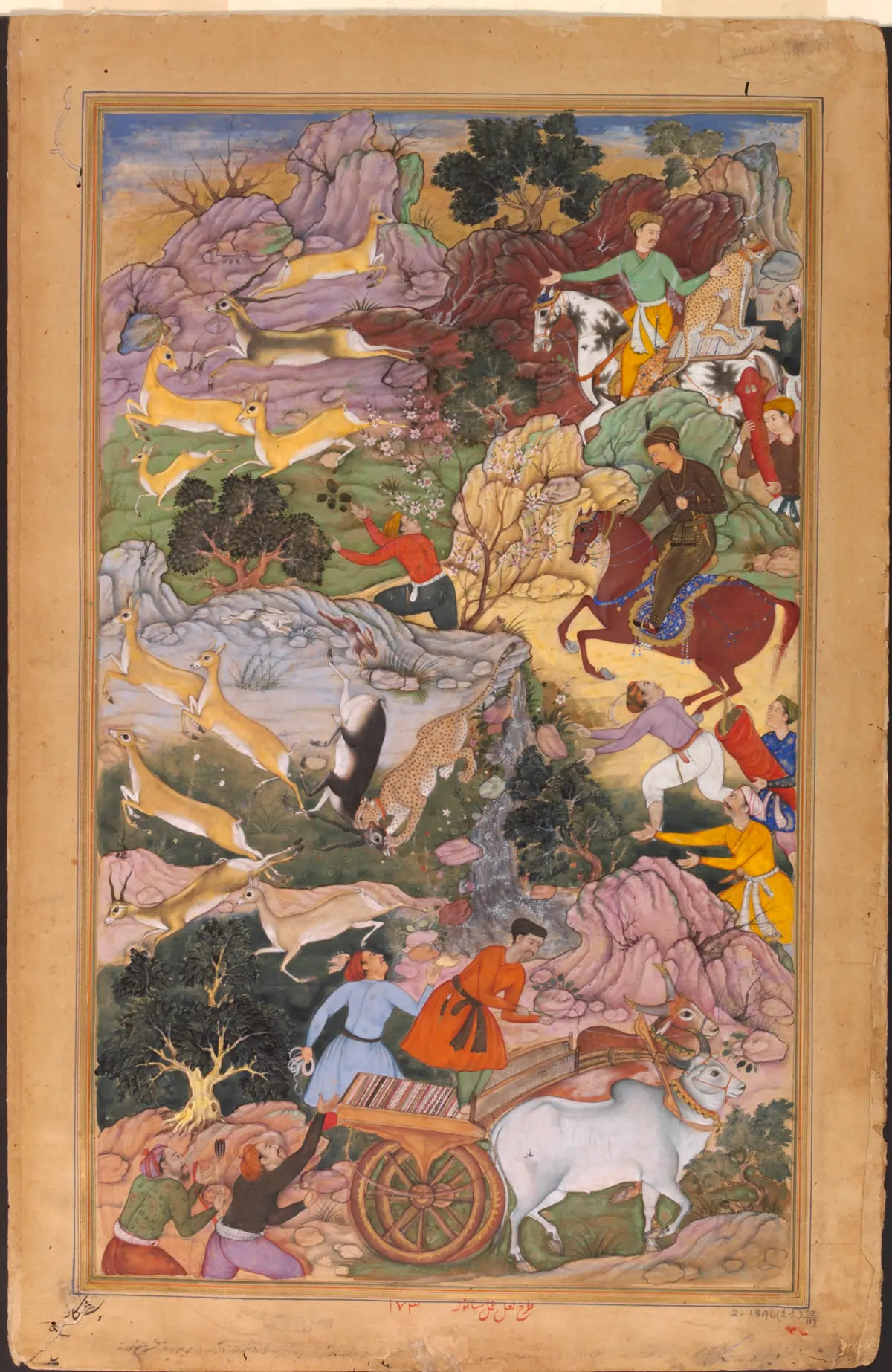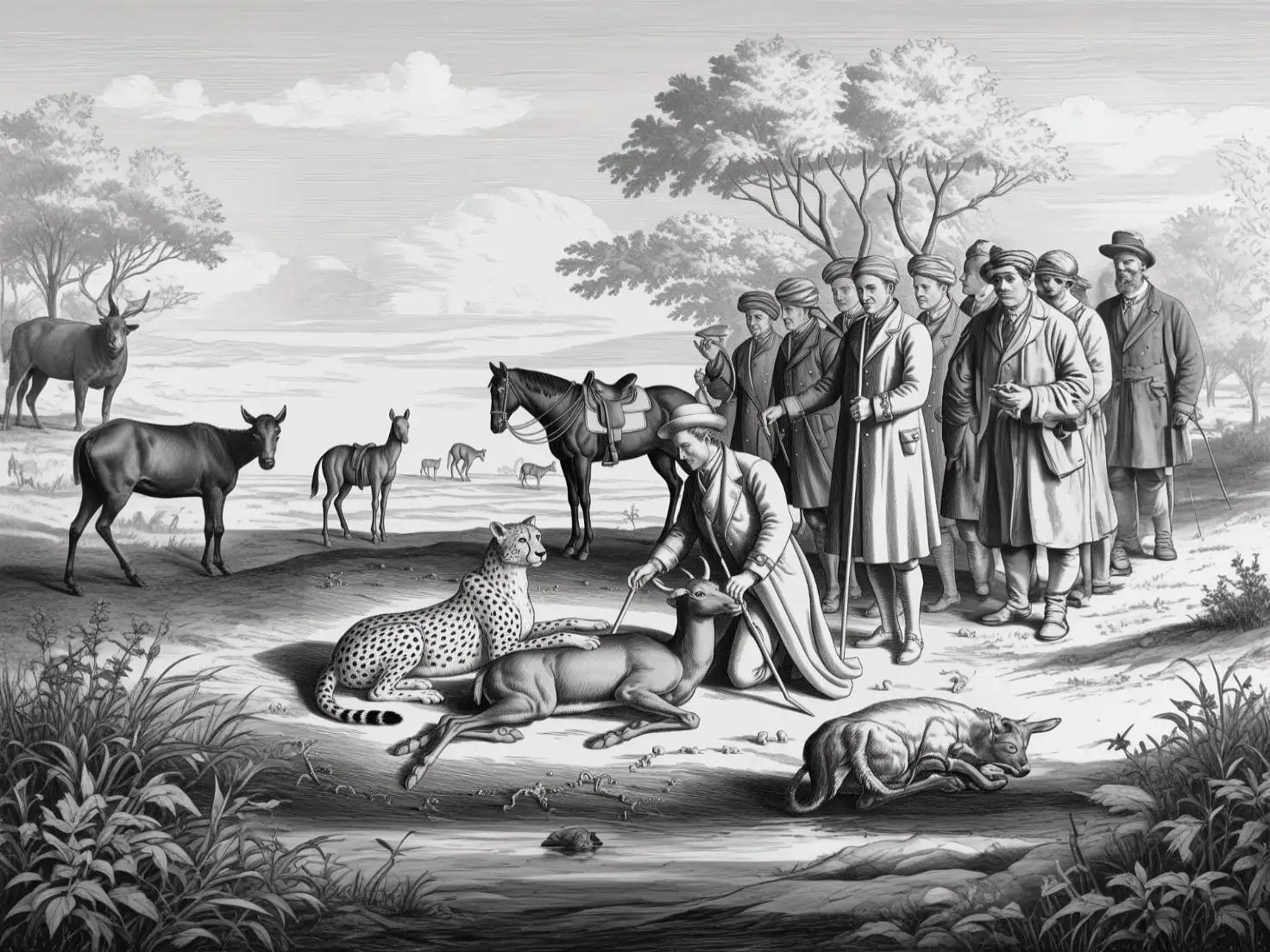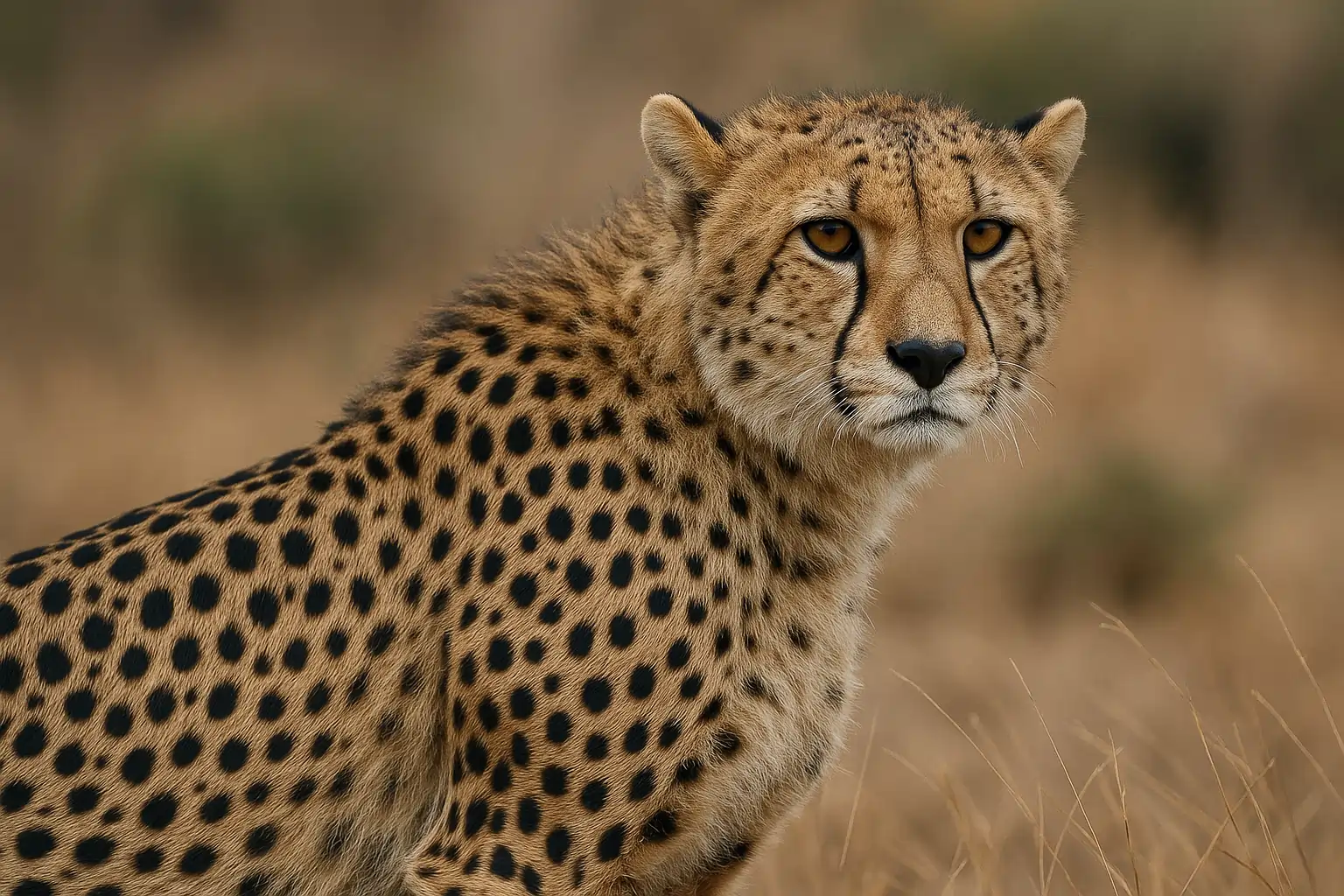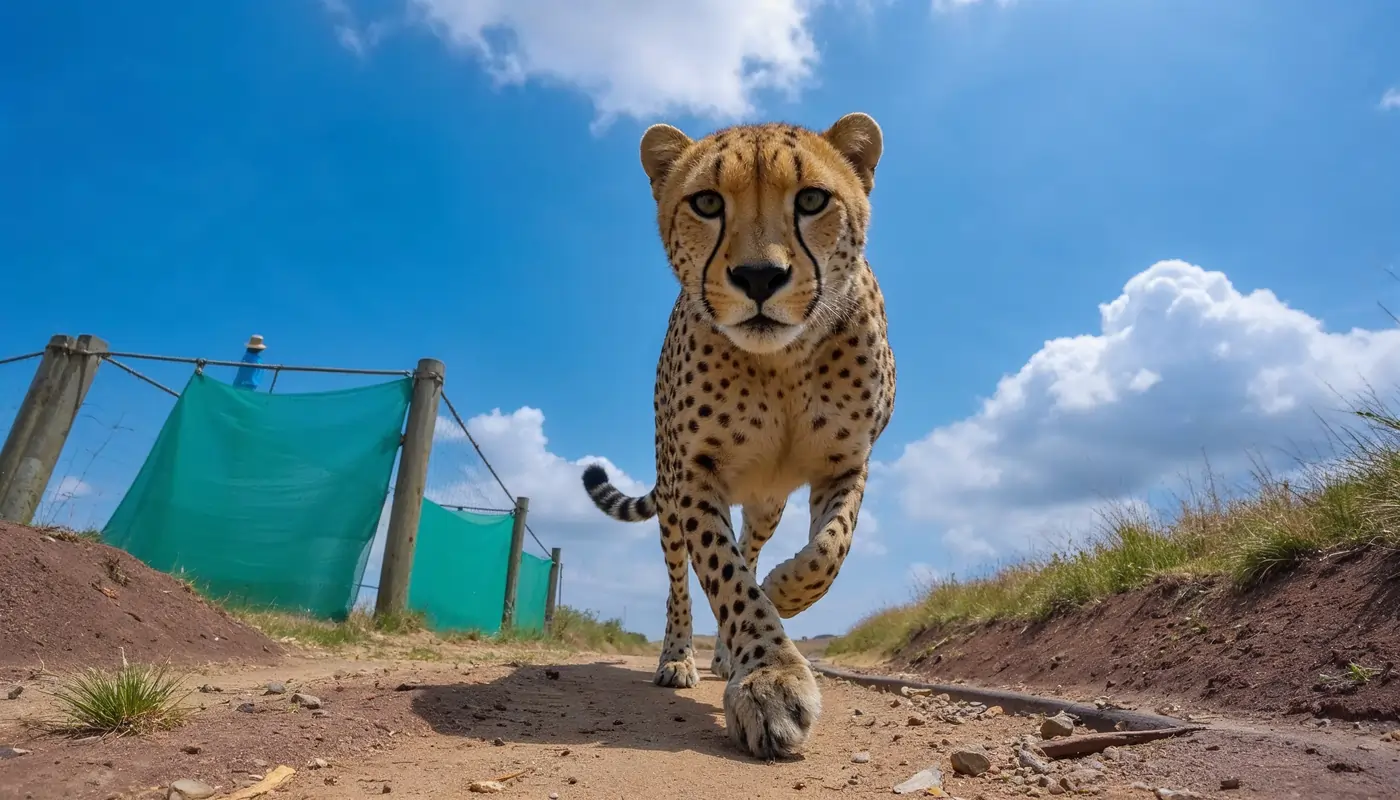Cheetahs are well known for being the fastest mammal on the planet, as they are capable of reacting up to 70 miles per hour (112.6km/h) in a short amount of time which makes them the fastest predator on earth. Currently, Serengeti in East Africa and Namibia and Botswana in Southern Africa are the only places where you can find the two largest cheetah populations. But did you know about the history of cheetahs in India?
In India, cheetahs were once a vital part of India’s natural and cultural history, thriving across its landscapes. Historically, they held a prestigious status, because they are often kept as royal pets by nobility and assisted in hunting expeditions, showcasing their predator significance.
However, this vibrant legacy took a somber turn as habitat loss, hunting, and declining prey led to their extinction in India by the mid-20th century. Today, there’s renewed hope with reintroduction efforts aimed at restoring cheetahs to their former habitats, reviving both their ecological role and cultural heritage. Let’s take a closer look into the history of cheetahs in the Indian continent and learn more about their historical value in India.
The Rich History of Cheetahs in India
Cheetahs were once a prominent feature of India’s diverse wildlife. These big cats thrived in grasslands and scrub forests, preferring vast, flat terrains that allowed them to sprint freely after prey. The plains of central India, such as those in Madhya Pradesh and Rajasthan, the Deccan Plateau, a sprawling region of semi-arid grasslands and rocky outcrops in southern India, and the Rann of Kutch, a unique salt desert and grassland expanse in Gujarat were prime locations for cheetahs to survive. The earliest depiction of Cheetah was found in some rock paintings found in Central India which belongs to 2500 – 2000 BCE.
Cheetahs as Hunting Tools
In medieval India, cheetahs were more than just wild animals—they were prized as hunting tools, particularly by the nobility and royalty. Known as “hunting leopards,” they were domesticated and trained to assist in royal hunts, a practice akin to falconry but adapted for land-based pursuits. This practice was introduced by the Mughals in India. The process began with capturing young cheetahs from the wild, after which skilled handlers, often called “cheetah-keepers,” tamed and trained them over months.
The training focused on teaching the cheetahs to stalk silently and then unleash their explosive speed to chase down prey such as blackbuck, chinkara, or other small antelopes. During a hunt, the cheetah would be hooded—similar to a falcon—to keep it calm until the prey was sighted. Once released, it would sprint toward the target, bringing it down with a swift bite to the throat. The hunters would then reward the cheetah with a portion of the kill, reinforcing its training. These hunts were not only practical but also ceremonial, showcasing the ruler’s wealth, skill, and dominion over nature.

Akbar’s Treatment of Domesticated Cheetahs
Emperor Akbar the Great, a prominent Mughal ruler (1556–1605), elevated the use of cheetahs to a grand scale, reflecting his fascination with these majestic animals. Historical accounts suggest Akbar maintained a staggering collection of over 1,000 cheetahs, using them both for hunting and as symbols of his imperial power. His treatment of these animals was marked by meticulous care and reverence.
Akbar housed his cheetahs in specially designed enclosures, often located near his palaces, with features like shaded resting areas and open spaces to mimic their natural habitat. A dedicated team of handlers ensured their well-being, feeding them fresh meat—sometimes sourced directly from the royal kitchens—and monitoring their health closely.
Training sessions were regular, with Akbar himself occasionally overseeing them, demonstrating his personal investment in their upkeep. Beyond their utility, Akbar is said to have developed a deep bond with his cheetahs, viewing them as companions as much as tools.
Some records even mention him naming his favorites, highlighting the unique relationship he fostered with these animals. This lavish treatment underscored the cheetah’s status as a royal treasure in Mughal India, blending practicality with a profound appreciation for their elegance and strength.
The Colonial Era and the Decline of Cheetahs in India
During the colonial era, particularly under British rule, the cheetah population in India faced a steep and irreversible decline. The British intensified trophy hunting, turning cheetahs into targets for sport and symbols of prestige. This practice, embraced by colonial officers and local elites alike, directly reduced cheetah numbers as their pelts and heads became coveted trophies. The relentless hunting pressure left the already vulnerable cheetah—dependent on vast, open landscapes—struggling to survive.
Simultaneously, habitat alteration driven by colonial policies reshaped India’s natural environment. Agricultural expansion converted the cheetah’s preferred grasslands and scrub forests into sprawling farmlands to support crops like cotton, wheat, and sugarcane. In regions such as the Deccan Plateau and central India, these changes erased the expansive terrains cheetahs needed to chase prey.
The decline of prey species compounded these challenges. The blackbuck, a key food source for cheetahs, suffered from both overhunting and habitat loss due to agricultural encroachment. As colonial hunters and local communities depleted blackbuck numbers, cheetahs faced increasing food scarcity. Other small antelopes and gazelles, also vital to the cheetah’s diet, similarly vanished from the landscape, tightening the grip of starvation on the struggling predator.
By the late 19th century, the cheetah population had plummeted to a critical low. Historical accounts suggest that fewer than 200 cheetahs remained in the wild by the 1870s—a dramatic fall from the thousands that once roamed India. This drastic drop reflected the combined toll of hunting, habitat loss, and prey scarcity, marking the colonial era as a turning point that pushed the cheetah toward extinction in India. The loss rippled beyond ecology, dimming the cultural reverence for a species once celebrated for its speed and grace.

Extinction of Cheetahs in India
The extinction of cheetahs in India marks a significant chapter in the nation’s wildlife history. Cheetahs in India faced a rapid decline in the early 20th century due to a combination of human and environmental pressures.
The last confirmed sightings of wild cheetahs in India occurred in the 1940s. In 1947, three cheetahs were tragically shot in the Koriya district of present-day Chhattisgarh—an incident often cited as the final blow to the dwindling population. Just a few years later, in 1952, the Government of India officially declared the cheetah extinct within its borders, making it the only large mammal to be declared extinct in independent India.
Several factors contributed to the extinction of cheetahs in India:
- Habitat destruction: Expanding agriculture and human settlements led to significant loss of the cheetah’s natural habitat.
- Decline in prey: Overhunting and habitat degradation caused a sharp reduction in populations of antelopes and other prey species.
- Poaching and hunting: Cheetahs were extensively hunted by royals and colonial elites for sport, often used in coursing events.
- Lack of conservation strategies: Unlike other endangered species, there was no captive breeding programme or long-term conservation plan for the Asiatic cheetah.
This unfortunate extinction was a wake-up call for Indian wildlife conservation. It highlighted the urgent need to protect ecosystems and develop proactive measures for endangered species.

Early Conservation Dreams: The First Steps Towards Reintroducing Cheetahs in India
Indian conservationists and policymakers began to explore possibilities for the reintroduction of cheetahs in India, driven by a desire to restore a missing piece of the country’s ecological heritage.
Initial plans focused on acquiring Asiatic cheetahs from Iran, where a small population of the subspecies still survived. However, these efforts faced significant hurdles. The major one was the limited numbers of Asiatic Cheetah in Iran, other hurdles were political tensions, logistical complexities, and ecological concerns posed challenges that stalled progress for decades. Iran, dealing with its own conservation priorities, was reluctant to part with any of its critically endangered cheetahs.
Throughout the 1980s and 1990s, the idea of bringing back cheetahs in India remained in the realm of debate. Conservationists, wildlife experts, and government bodies discussed the feasibility of restoring the species, weighing ecological impact, habitat suitability, and long-term sustainability.
Although tangible progress was slow, these early efforts laid the foundation for more structured reintroduction initiatives in the 21st century. The dream of seeing cheetahs back in the Indian wild was not forgotten—it simply needed the right time, resources, and international cooperation to become a reality.

Project Cheetah: A New Beginning for Cheetahs in India
After years of discussion, cheetah reintroduction in India became a reality with the launch of Project Cheetah. In 2020, the Supreme Court of India approved the introduction of African cheetahs as a substitute for the extinct Asiatic cheetahs.
In 2022, eight cheetahs from Namibia were relocated to Kuno National Park in Madhya Pradesh, followed by more from South Africa. This marked the first successful reintroduction of wild cheetahs in India, a major milestone in Indian conservation history.
Project Cheetah aims to revive the country’s grassland ecosystems and bring back a species lost for over 70 years. While challenges remain, the project reflects India’s growing commitment to wildlife restoration.

Conclusion: Reviving the Legacy of Cheetahs in India
From royal hunting companions to complete extinction, the history of cheetahs in India reflects both loss and resilience. The launch of Project Cheetah marks a hopeful new chapter—an ambitious attempt to restore a long-lost species and revive India’s ecological heritage.
As efforts continue, the success of this cheetah reintroduction in India will depend on sustained conservation, habitat protection, and public awareness. The journey is far from over, but the return of cheetahs in India signals a powerful step towards rewriting a story of extinction into one of revival.
If you are a wildlife enthusiast then you can check our tiger tours and other wildlife safaris. With a trust of 25 years we have handled more than 1M+ safaris.

